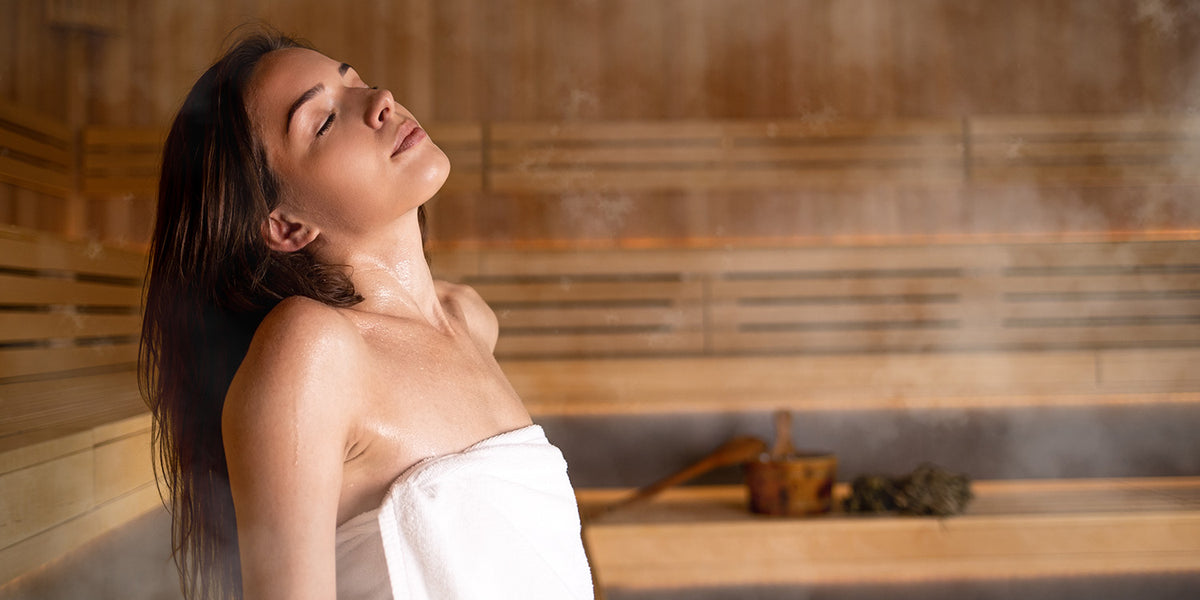The search for relaxation and rejuvenation has led many people to explore the benefits of steam rooms and saunas. These therapeutic environments offer a unique combination of steam room and sauna , humidity, and tranquility that can help improve both physical and mental well-being. In this article, we will delve into the world of steam rooms and saunas, exploring their health benefits, how they work, considerations for usage, design and installation options, maintenance tips, and factors to consider when choosing the right steam room and sauna for your needs.
Introduction
Definition of a Steam Room
A steam room is a specially designed space that uses steam to create a warm and humid environment. It typically features tiled walls and a bench seating area. Steam is generated by pouring water onto heated rocks or through steam generators, resulting in a mist-like atmosphere that envelops the room.
Definition of a Sauna
A sauna, on the other hand, is a room or small building that uses dry heat to create a high-temperature environment. The heat is usually produced by a wood-burning stove, an electric heater, or infrared heating elements. Saunas are typically constructed with wooden interiors and provide a dry heat experience.
Key Differences between a Steam Room and a Sauna
While both steam rooms and saunas offer similar relaxation and health benefits, there are some key differences between the two:
- Humidity: Steam rooms have high humidity levels due to the presence of steam, whereas saunas have low humidity levels as they provide dry heat.
- Temperature: Steam rooms are generally cooler than saunas, with temperatures ranging between 100°F to 120°F (38°C to 49°C). Saunas, on the other hand, can reach higher temperatures of 150°F to 195°F (65°C to 90°C).
- Sensation: Steam rooms offer a wet and moist wellhealthorganic.com:difference-between-steam-room-and-sauna-health-benefits-of-steam-room, while saunas provide a dry heat experience.
Health Benefits of Steam Rooms and Saunas
Both steam rooms and saunas offer a range of health benefits that can enhance overall well-being. Let’s explore some of the notable advantages:
Relaxation and Stress Relief
One of the primary benefits of steam rooms and saunas is their ability to promote relaxation and reduce stress. The warm and soothing environment helps to alleviate steam room and sauna , relax muscles, and calm the mind. Spending time in a steam room and sauna can create a sense of tranquility and provide an escape from the demands of daily life.
Detoxification and Cleansing
Steam rooms and saunas are known to aid in detoxification by promoting sweating. Sweating helps the body eliminate toxins, heavy metals, and impurities through the pores. The deep sweating induced by the heat can contribute to a thorough cleansing of the skin and can leave you feeling refreshed and revitalized.
Improved Circulation
The heat in steam rooms and saunas causes blood vessels to dilate, leading to improved circulation. This increased blood flow can enhance oxygen and nutrient delivery to the body’s tissues and organs. It may also help lower blood pressure and improve cardiovascular health.
Skin Health and Rejuvenation
The combination of heat and humidity in steam rooms can be particularly beneficial for the skin. The steam helps to open up pores, unclog them, and remove dirt, oil, and dead skin cells. This deep cleansing can result in a clearer complexion and a healthy glow. steam room and sauna , with their dry heat, can also contribute to skin health by promoting blood flow and increasing the delivery of nutrients to the skin.
Respiratory Health
Steam rooms, in particular, can provide relief for respiratory conditions such as sinus congestion, allergies, and asthma. The warm steam helps to moisturize and soothe the respiratory passages, reducing inflammation and promoting easier breathing. Saunas, although not as targeted for respiratory health, can also provide some benefits through improved circulation and toxin elimination.
Muscle and Joint Pain Relief
The heat in steam rooms and saunas can help relax muscles and alleviate pain. The warmth can promote blood flow to muscles and joints, reducing stiffness and easing soreness. Individuals suffering from conditions like arthritis or muscle tension may find relief from spending time in these heated environments.
How Steam Rooms and Saunas Work
To understand the benefits of steam rooms and saunas, it’s important to explore how they work and create their unique environments.
Steam Rooms
1. Steam Generation
In a steam room, steam is generated by pouring water onto heated rocks or through steam generators. The rocks retain the heat and moisture, releasing steam into the room. This steam raises the humidity levels and creates the characteristic mist-like atmosphere.
2. Temperature and Humidity Control
The temperature and humidity in a steam room can be regulated using a control system. This allows users to adjust the intensity of the heat and the amount of steam in the air to their preference. The desired temperature and humidity levels can vary depending on individual comfort and health considerations.
Saunas
1. Dry Heat Generation
Saunas produce heat through various methods, including wood-burning stoves, electric heaters, or infrared heating elements. These heat sources raise the temperature inside the sauna, creating a dry and hot environment. The absence of steam distinguishes saunas from steam rooms.
2. Temperature Control
Saunas typically feature temperature controls that allow users to adjust the heat output. The temperature can be set to a comfortable level, and individuals can regulate the duration of their sauna session based on their tolerance and desired experience.
Considerations for Using Steam Rooms and Saunas
While steam rooms and saunas offer numerous health benefits, it’s important to consider certain factors before using them.
Precautions for Pregnant Women and Individuals with Certain Medical Conditions
Pregnant women and individuals with specific medical conditions, such as cardiovascular problems or uncontrolled high blood pressure, should consult their healthcare providers before using steam rooms or saunas. These environments can raise body temperature, which may not be suitable for everyone. It’s essential to prioritize personal health and safety and follow professional medical advice.
Hydration and Time Limits
To prevent dehydration, it’s crucial to stay hydrated before, during, and after using a steam room or sauna. Drinking water or electrolyte-rich beverages can help replenish fluids lost through sweating. Additionally, it’s important to limit the duration of each session to avoid overheating and ensure comfort.
Proper Etiquette and Hygiene
When using steam rooms and saunas in public facilities, it’s essential to observe proper etiquette and hygiene. Following guidelines such as using towels or sitting on towels to maintain cleanliness, refraining from loud conversations, and respecting others’ personal space can contribute to a pleasant and respectful atmosphere for everyone.
Design and Installation of Steam Rooms and Saunas
For individuals considering the installation of a steam room or sauna in their homes or businesses, several design and installation aspects should be considered.
Size and Layout Considerations
The available space and intended usage will determine the size and layout of the steam room or sauna. Factors such as ceiling height, ventilation requirements, and the number of users should be taken into account. Customization options are available to suit individual preferences and space constraints.
Materials and Construction
Steam rooms and saunas can be constructed using a variety of materials, such as tiles, glass, or wood. Each material has its aesthetic and functional advantages. Proper insulation and waterproofing measures should be implemented during construction to ensure durability and safety.
Ventilation and Air Circulation
Proper ventilation is crucial for steam rooms and saunas to maintain air quality and prevent excessive humidity. Ventilation systems should be designed to remove excess moisture and ensure adequate air circulation. This helps prevent the growth of mold or mildew and ensures a comfortable and enjoyable experience.
Popular Types of Steam Rooms and Saunas
The world of steam rooms and saunas offers a range of options to suit different preferences and needs. Let’s explore some popular variations:
Traditional Steam Rooms and Saunas
Traditional steam rooms and saunas follow conventional designs and offer the classic steam or dry heat experience. They are available in various sizes and can be installed in both residential and commercial settings. These traditional options provide a timeless and authentic sauna experience.
Infrared Saunas
Infrared saunas utilize infrared heaters to emit radiant heat that directly warms the body without significantly raising the ambient temperature. This allows for a lower overall heat level while still achieving the benefits associated with saunas. Infrared saunas are often favored for their gentle heat and energy efficiency.
Steam Showers and Portable Steam Rooms
For those with limited space or seeking convenience, steam showers and portable steam rooms offer viable options. Steam showers combine the functionality of a shower enclosure with a compact steam room, providing a dual-purpose bathing experience. Portable steam rooms are freestanding units that can be assembled and disassembled as needed, making them ideal for temporary setups or moving locations.
Maintenance and Care of Steam Rooms and Saunas
Proper maintenance and care are essential to ensure the longevity and optimal performance of steam rooms and saunas. Here are some maintenance tips to consider:
Cleaning and Sanitization
Regular cleaning is crucial to maintain a hygienic and enjoyable steam room and sauna. Surfaces should be wiped down regularly to remove sweat, dirt, and bacteria. Specific cleaning products formulated for steam rooms and saunas should be used to avoid damaging materials or compromising functionality.
Preventive Maintenance
Performing routine maintenance checks is essential to identify and address any issues promptly. This includes inspecting heating elements, steam generators, ventilation systems, and controls. Additionally, steam room or sauna owners should follow manufacturer guidelines and schedule professional maintenance as recommended.
Troubleshooting Common Issues
Understanding common issues that may arise with steam rooms and saunas can help users troubleshoot problems. Issues such as insufficient steam, uneven heat distribution, or malfunctioning controls can often be resolved with basic troubleshooting or by consulting professionals.
Choosing the Right steam room and sauna for Your Needs
When selecting a steam room and sauna, several factors should be taken into consideration to ensure a well-suited choice.
Budget Considerations
Determine a budget range for your steam room or sauna project. Costs can vary based on factors such as size, materials used, additional features, wellhealthorganic.com:difference-between-steam-room-and-sauna-health-benefits-of-steam-room and installation requirements. Setting a budget helps narrow down options and ensures a realistic investment.
Space Availability
Evaluate the available space for the steam room and sauna . Consider the dimensions, layout, and any specific requirements regarding ventilation or electrical connections. This assessment will help determine the most suitable type and size of steam room or sauna.
Personal Preferences and Health Goals
Consider your personal preferences and health goals when choosing a steam room and sauna . Think about factors like desired temperature range, humidity levels, additional features (such as chromotherapy lighting or music systems), and specific health benefits you wish to prioritize. Understanding your preferences and goals will guide you toward the most appropriate selection.
Conclusion
Steam rooms and saunas offer a myriad of health benefits and serve as relaxing havens for rejuvenation. Whether you prefer the steamy mist of a steam room or the dry heat of a sauna, these therapeutic environments have something to offer everyone. By understanding the differences, health benefits, maintenance considerations, and available options, you can make an informed decision about incorporating a steam room and sauna into your lifestyle. So go ahead, indulge in the soothing warmth, and embark on a journey of relaxation and wellness.
Frequently Asked Questions (FAQs)
Q1: Are steam rooms and saunas safe for everyone?
Q2: How long should a typical steam room and sauna session last?
Q3: Can I install a steam room or sauna in my home?
Q4: Are there any specific health conditions for which steam rooms or saunas are not recommended?
Q5: What is the recommended age for using steam rooms or saunas?
Q6: How often should steam rooms and saunas be cleaned?
Q7: Can I use a steam room and sauna if I have sensitive skin?
Q8: Are there any alternative therapies or treatments that can be combined with steam room and sauna sessions?
Q9: Can steam rooms and saunas help with weight loss?
Q10: Are there any post-session precautions or recommendations to follow?





